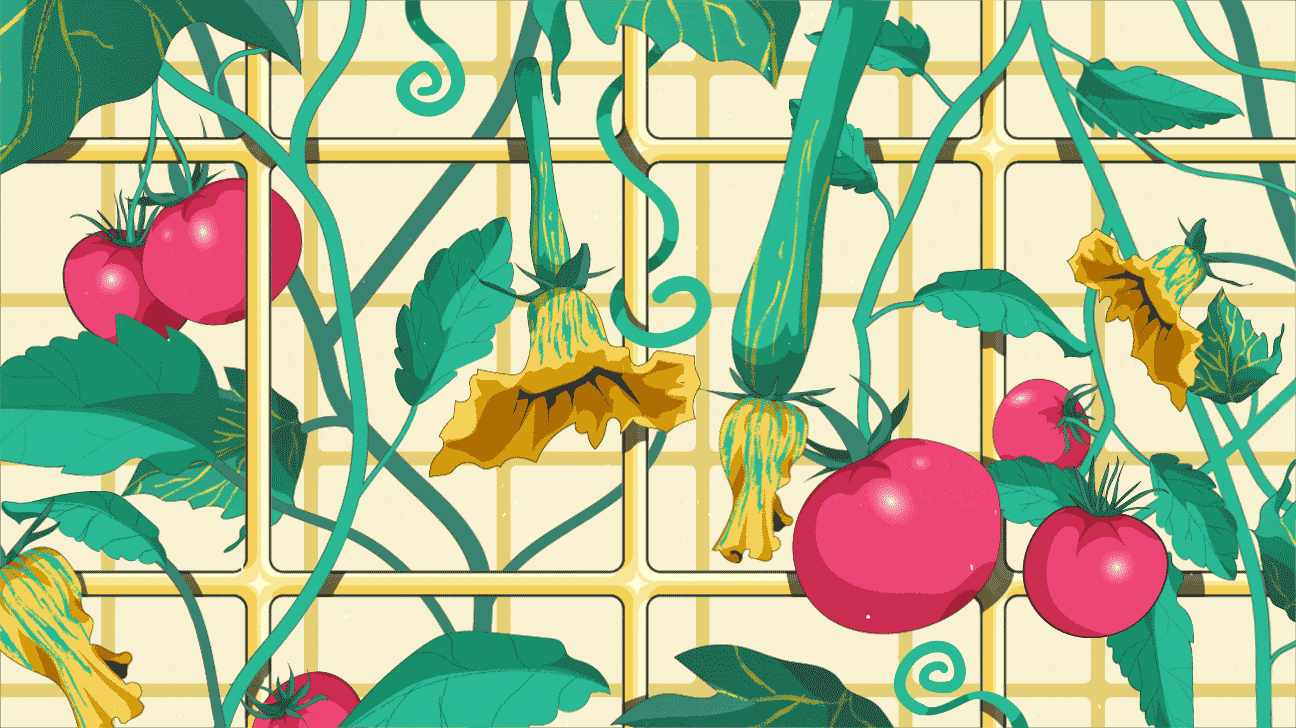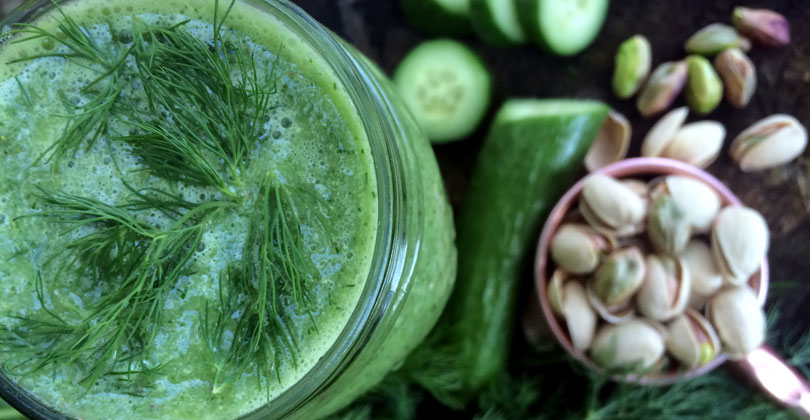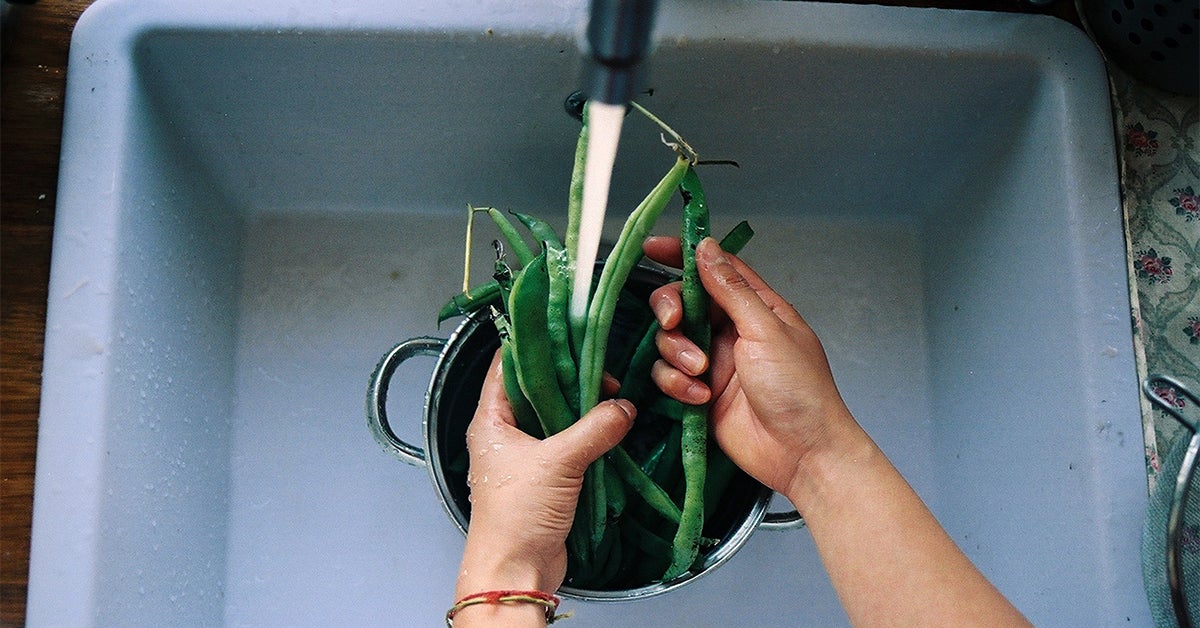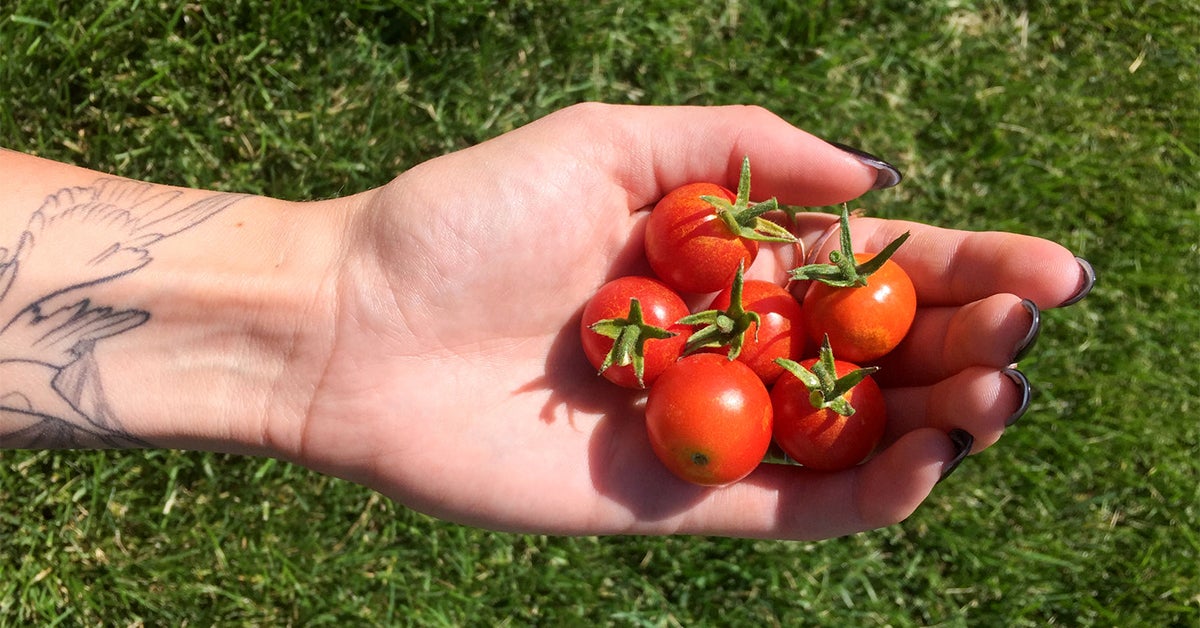Do you have your heart set on growing a vegetable garden but your lack of space is slowing you down? Don’t worry. One of the beauties of starting a garden is there’s a lot of flexibility.
So you don’t have the yard to start cultivating your own crops. A little shift in perspective can take your vision higher — as in vertically. Luckily for you, there are several veggies that love to climb, do well in pots, and are perfect for creating a vertical garden.
Interested? Let’s sprinkle a little water on this seed.

The perks of growing up ⬆️
This idea of starting a vertical garden isn’t just about aesthetics (though they do look great). It’s about efficiency and creativity.
“Vertical gardening is a method used to maximize yields of any garden space (large or small) by making use of the air space, walls, and ceilings,” says Diane Kuthy, Gardener, Homesteader, and Founder of the How to grow everything blog. “This technique is especially recommended for people with limited gardening space because it increases the overall available square footage of space that can be used for plants.”
Growing vertically is a beautiful solution if you have tight outdoor quarters since it allows you to use spaces that often get overlooked. “It opens up a new world of growing locations, like walls, rails, fences, balconies, and rooftops; it allows people to get creative,” says Adam Crouch, gardener and founder of SproutRite.
Things to keep in mind before digging in
Unless you’re the Grinch, you aren’t just born with a green thumb. Here’s how to set yourself up for success:
Do plan
Planning in advance will help you take on the project with confidence.
“I recommend that vertical gardens be carefully planned out prior to planting” says Crouch. “This could reduce the likelihood of realizing a costly mistake down the line.”
Balance your wants with the plants’ needs
You’ll want to pay attention to what each plant needs to grow.
“If a plant requires an 8-inch container for optimal health, don’t try to squeeze that plant into a 4-inch container for the sake of an aesthetic,” says Kuthy.
“It’s important that vining crops be given the proper space to grow, expand, and be supported,” says Crouch.
Don’t cut corners
“Be creative, but make sure that each plant receives adequate sunlight, water, soil, and growing space,” says Kuthy. “Making sacrifices here will lead to sad, unproductive, and short-living plants.”
Caring for your plants calls for patience.
Start small
It can be easy to get excited about the gardening process and rush in with a “go big” or “go home” attitude. But this approach can cause you to quickly get overwhelmed.
“The best way to be successful is to start small and slowly build your vertical garden,” says Kuthy. “Start with a few plants and pay attention to what works/doesn’t work for them (and for you!).”
Let’s plant some vertical veggies
Once you have your green game plan ready, it’s time to flip through the robust menu of veggies to seed your vertical garden with. Here are a few favorites that should grow nicely:
Cucumbers

Whether you’d like to make a Greek salad, a smoothie, or add some fresh, healthy goodness to sandwiches or wraps, cucumbers are a fun, summertime favorite.
How to grow:
Choose a spot in your garden that receives the most sun. “Cucumbers love heat and lots of sunlight,” says Kuthy. “They are really hungry plants that require fertile soil and good moisture.”
For your vertical garden, opt for the vining variety since they can be trained to climb up trellises and structures and produce more abundantly than the bush varieties.
“Vining cucumbers do quite well if given space to climb,” says Crouch. So you’ll want to make sure that you not only provide the structure, such as a trellis, but that there’s plenty of space so it’s able to spread out and grow.
Green beans

Green beans — aka string beans or snap beans — are fun to grow, especially since they also come in, gasp, other colors, like purple and yellow. In a vertical garden, you’ll want to opt for a pole style bean instead of bush beans, since they like to climb.
How to grow:
Opt for planting seedlings instead of seeds, if you’re planting in the summer. Pole beans need plenty of sunlight and take around 2 months before you’ll be able to harvest.
“They are super easy to grow, mature quickly (about 55 to 60 days), and take up very little space because they [can] grow vertically on a pole, hence the name ‘pole bean’,” says Kuthy.
Bush beans are known for growing in a compact way and do well in small spaces. According to Kuthy, “Pole beans yield more beans than bush beans do, while taking up less space.”
Peas

Sugar snap peas brighten an edible garden space with their purple and pink flowers that bring pollinators to the garden. Plus, they’re fun to eat because you can pop the whole pod into your mouth or break it open to enjoy the small chartreuse colored peas.
How to grow:
Peas typically grow best in mild climates, usually in the spring and fall, but need lots of sunlight to thrive. Peas are also very willing climbers, so you’ll need to have a structure for the vines to spread out while supporting the plant.
“Peas don’t need to be trained to use a trellis because they have little tendrils which reach out and attach [as they] climb up whatever they come into contact with,” says Kuthy.
Tomatoes

Tomatoes may conjure up visions of summertime since this is when they ripen on the vine. There’s a plethora of types to choose from, with varying sizes, shapes, and a rainbow of colors. Not sure how to decide? Select varieties that grow well in your area based on the climate.
How to grow:
Tomatoes thrive in the sun and heat, so select a place where you know they’ll be able to bathe in the sunlight. Choose a deep and wide container at least 6 inches deep so the roots have plenty of space to anchor into the dirt. Plant in well-drained soil with added compost and water often but avoid soggy soil.
Tomatoes will need lots of support as they grow so you’ll want to use poles, stakes, or trellises to give them stability.
“One of the best ways to provide support for tomatoes is to place a stake in your container next to your tomato plant that’s at least 3 feet long,” says Kuthy. “Then, as your tomato plant grows up and requires support, very lightly attach the tomato plant to the stake using a string or zip tie.”
Keeping them upright and supported will prevent them from falling over and becoming weakened due to diseases.
Summer squash

Zucchini may be the claim to fame but it’s just one type of summer squash. Summer squash are prolific, which means that with a couple of plants (and if all goes well), you’ll have an abundant harvest. Summer squash are the gift that just keeps on giving, which is why friends may be gifting these veggies or baking zucchini bread to eat through the harvest.
How to grow:
Summer squash love the sun and need plenty of heat. And they also do best when planted in rich, well-drained soil with plenty of compost. Make sure to keep soil moist with consistent waterings, but don’t overwater. It grows well vertically, but make sure you set up a good support system.
“The fruit of the plant is going to grow big and heavy, so you’ll need to provide some support for them… so that they don’t snap off [the] vertical trellis,” says Kuthy. “Many people will use old sheer stockings to make little hammocks for the fruit.”
Happy growing!

0 Commentaires